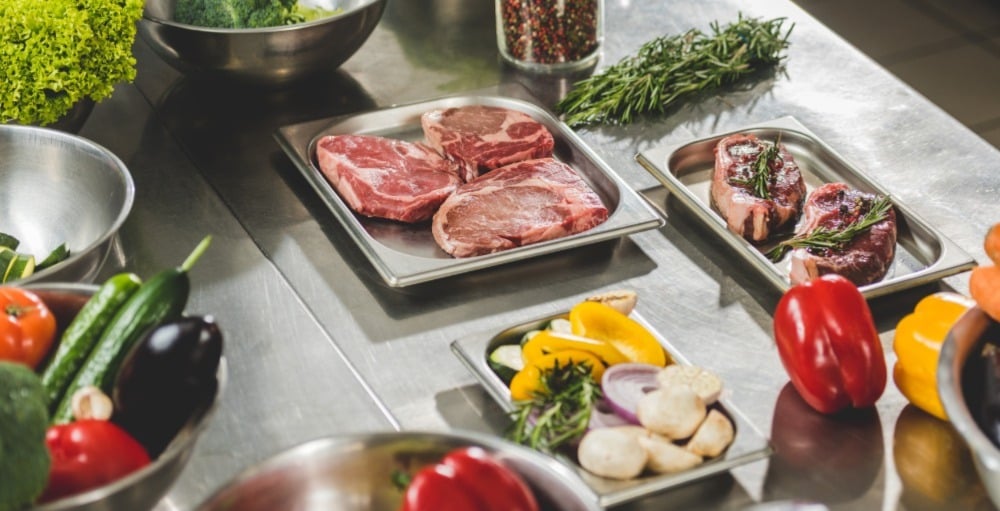As a food handler, you should know the difference between high-risk and low-risk foods, and how to work with each safely.
Food handlers have many responsibilities when working with food. Whether you’re on a truck delivering raw materials to a processing facility, on a manufacturing line overseeing production, in a commercial kitchen preparing an item for a meal, or serving that meal to a customer, food safety principles should always be top-of-mind.
In the context of food safety, different foods are classified as either high risk or low risk. In this article, we’re going to look at the difference between high-risk and low-risk foods, and give you the best tips on how to handle these items to ensure food is safe, regardless of the stage in the food handling process.
High-risk vs. low-risk foods
First, it’s important to understand what makes one food higher risk than another. High-risk foods (a.k.a. potentially hazardous foods) are foods that provide the ideal conditions for bacterial growth, which means they are at a greater risk of causing food poisoning if they become compromised.
High-risk foods are characterized as generally moist, high in protein or starch and with a neutral pH (low to medium acidity). High-risk food examples include:
- Seafood
- Poultry and red meat
- Dairy products like milk, cheese or sour cream
- Eggs
- Cooked rice
- Processed fruits and vegetables like ready-to-eat salads
So, what is considered a low-risk food? Low-risk foods are foods that do not provide ideal conditions for bacteria to grow. They are typically foods that are high in acid or sugar, as well as salted foods, dry foods, or canned or vacuum-packed foods. Examples of low-risk foods include:
- Crackers and biscuits
- Plain breads and rolls
- Pickles
- Jams and vinegars
- Uncut fruits and vegetables
Low-risk foods are generally considered ‘safer’ than high-risk foods, but that doesn’t mean there is no threat of contamination. According to the most recent annual report from the Centers for Disease Control and Prevention (CDC), 25% of foodborne illness outbreaks in 2017 were linked to low-risk foods like fruits, vegetables, grains, beans, nuts, and seeds.
Can a low-risk food become a high-risk food?
A low-risk food can easily become higher risk if handled improperly. For example, if you’re working with fresh produce and don’t wash it properly, bacteria and viruses can be left behind. Whole fruits and vegetables that are cut also go from low risk to high risk. Dry, uncooked rice is low risk, but once water is added for cooking, it becomes a high-risk food.
Handling high-risk and low-risk foods
Regardless of the difference between high-risk and low-risk foods, as a food handler, you want to make sure you’re taking every precaution to keep foods safe. When handling food, follow these tips:
- Wash your hands before and after working with food
- Clean, sanitize amd disinfect food equipment, food contact surfaces and utensils, before and after use
- Store food properly – for example, store high-risk, perishable foods in the refrigerator; store dry goods off the floor in the pantry
- Eliminate and prevent pest infestations
- Complete food safety training, and provide training to anyone in your supply chain that works with food
For more from our Food Handler How-To Series, be sure to check out these related blogs:

